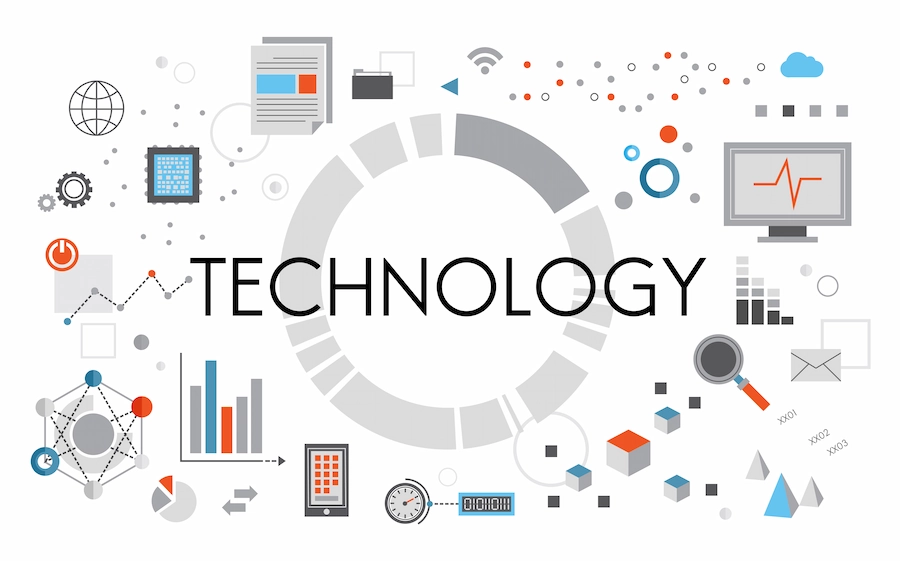- Home
- AI & Tech Tools
- Future Proof Your Workflow: Mu ...

The Tech Tool Revolution
In 2023, McKinsey’s groundbreaking study revealed that businesses leveraging AI-driven tools experienced a staggering 47% boost in productivity. Yet, as the digital landscape becomes saturated with platforms promising efficiency, the challenge lies in separating transformative solutions from fleeting trends. Technology tools are no longer optional—they are the lifeblood of modern business, driving innovation, scalability, and competitive edge. From surgeons using augmented reality to collaborate across continents to educators gamifying classrooms with AI, examples of technology tools are reshaping industries at an unprecedented pace.
Consider the healthcare sector, where augmented reality platforms like Proximie enable surgeons to guide colleagues through complex procedures in real time. Or the manufacturing industry, where IoT sensors predict equipment failures weeks in advance, averting costly downtime. Even in education, AI-powered grading systems are freeing teachers to focus on mentorship rather than paperwork. These innovations aren’t just incremental improvements—they’re redefining what’s possible.
Essential Criteria for Evaluating Technology Tools
Before exploring examples of technology tools, it’s critical to establish a framework for evaluation. The wrong tool can drain resources, while the right one can unlock exponential value.
1. Purpose Alignment
Every tool must address a specific problem. For instance, Slack emerged to resolve fragmented communication across teams, while QuickBooks automates accounting workflows for small businesses. Before adopting any tool, ask: Does this solve a bottleneck or simplify a repetitive task? For example, a marketing team drowning in data might benefit from Tableau’s visualization capabilities, while a logistics company might prioritize route optimization tools like Routific.
2. Integration Capabilities
Seamless compatibility with existing systems is non-negotiable. Technology Tools like Zapier act as connective tissue, bridging gaps between platforms—imagine automatically sending Slack alerts when a Google Sheets cell updates or syncing Salesforce contacts with Mailchimp. Integration reduces friction and prevents data silos. Microsoft Power BI exemplifies this by unifying analytics across Azure, Excel, and Salesforce, enabling teams to make data-driven decisions without switching platforms.
3. Security Standards
In an era of escalating cyber threats, examples of technology tools must prioritize data protection. SOC 2 compliance, end-to-end encryption, and adherence to regulations like GDPR are baseline requirements. For example, Epic Systems, a leader in healthcare EHR software, employs military-grade encryption to safeguard patient records, ensuring compliance with HIPAA. Similarly, communication platforms like Signal have gained traction by guaranteeing encrypted messaging, a critical feature for industries handling sensitive data.
4. ROI Potential
Quantifying a tool’s return on investment is essential. A $50/month project management tool that saves 20 hours of labor monthly delivers a $1,200 ROI (assuming $30/hour labor costs). Technology Tools like Toggl Track or Harvest simplify ROI analysis by measuring time saved versus subscription costs. For enterprises, platforms like UiPath demonstrate high ROI by automating repetitive tasks—Ernst & Young, for instance, automated 85% of its finance workflows, achieving payback within six months.
- Scalability:The examples of technology tools must grow with your business. For example, Airtable scales from simple task tracking to enterprise-level project management.
- User Experience (UX): Poorly designed Technology tools lead to low adoption. Adobe’s shift to Figma saw a 5x increase in user engagement due to intuitive design.
Industry-Specific Examples of Technology Tools
Healthcare: Precision Meets Innovation

The healthcare sector demands technology tools that balance accuracy, compliance, and speed. Take Epic Systems, a titan in Electronic Health Record (EHR) management. By centralizing patient data across providers, Epic reduces administrative errors by 40% and enhances care coordination. At the Mayo Clinic, Epic’s predictive analytics slashed patient wait times by 25% by anticipating staffing needs and optimizing appointment scheduling.
Another standout is Proximie, an augmented reality platform transforming surgery. Surgeons use Proximie to overlay holographic guidance onto live video feeds, enabling remote collaboration. Hospitals adopting Proximie report 30% fewer complications in complex procedures, such as cardiac surgeries. Meanwhile, Tempus leverages AI for genomic analysis, identifying personalized cancer therapies 50% faster than traditional methods—a breakthrough that’s extending lives and reshaping oncology.
- AI Diagnostics: PathAI uses machine learning to analyze pathology slides, improving diagnostic accuracy by 35% in cancer detection.
- Telehealth Expansion: Doximity’s telehealth platform connects 80% of U.S. physicians, reducing rural care gaps.
Education: Democratizing Learning

EdTech tools are dismantling barriers to education while alleviating administrative burdens. Kahoot!, a gamified quiz platform, turns classrooms into interactive game shows. A University of Oslo study found Kahoot! boosts student engagement by 50%, particularly in STEM subjects. Educators also use it for corporate training, where employees at companies like Deloitte report higher retention of compliance protocols.
Gradescope, an AI-powered grading tool, is another game-changer. By automating the assessment of essays, coding assignments, and math problems, Gradescope reduces grading time by 70%. Professors at UC Berkeley now spend more time mentoring students and less on paperwork. Platforms like Coursera further democratize education by offering certifications from top universities—employees at PwC who use Coursera upskill twice as fast, accelerating their career trajectories.
- Personalized Learning: DreamBox Learning adapts math lessons in real time, improving K-8 test scores by 20%.
- Virtual Labs: Labster’s VR simulations let students conduct experiments remotely, cutting lab costs by 60%.
Manufacturing: Building the Future

Smart factories rely on IoT, AI, and real-time analytics to optimize production. Siemens Teamcenter, a Product Lifecycle Management (PLM) platform, exemplifies this. By streamlining design, engineering, and production workflows, Teamcenter cuts time-to-market by 25%. Tesla, for instance, uses Teamcenter to coordinate the design of EV components across global teams, ensuring seamless collaboration from prototype to production.
Augury, an IoT-driven predictive maintenance tool, is another manufacturing staple. Sensors attached to machinery analyze vibrations and temperature to predict failures weeks in advance. Automotive plants using Augury report 45% less unplanned downtime, with a single avoided breakdown saving an average of $200,000. Similarly, PTC Vuforia’s AR-guided assembly lines overlay digital instructions onto physical workspaces, reducing errors by 30% in companies like Boeing.
- Digital Twins: GE Digital’s Predix creates virtual replicas of machinery, optimizing performance and reducing maintenance costs by 25%.
- 3D Printing Software: Autodesk Fusion 360 enables rapid prototyping, slashing product development cycles by 40%.
Cross-Industry Powerhouse Tools
Productivity Tools:
Productivity tools have evolved from simple task managers to all-in-one platforms. Notion, for example, combines notes, databases, and project timelines into a unified workspace. Airbnb’s design team uses Notion to manage creative projects 20% faster, while startups like Figma leverage its templates for sprint planning and OKR tracking.
Trello, with its visual Kanban-style boards, simplifies task management for remote teams. Marketing agencies like HubSpot use Trello to track client campaigns, reporting 40% better visibility into deadlines. Asana takes this further with advanced features like workload balancing and Gantt charts—NASA relies on Asana to coordinate over 100 simultaneous space missions, ensuring every team stays aligned.
- ClickUp: Merges docs, goals, and chat into one platform, reducing app-switching fatigue for teams.
- Clockify: Tracks time across projects, helping freelancers bill accurately and enterprises monitor productivity.
Collaboration Tools:
The rise of remote work has fueled demand for robust collaboration tools. Miro, a digital whiteboard, replicates in-person brainstorming sessions. Spotify’s remote teams use Miro for wireframing and Agile workflows, while consulting firms like McKinsey employ it for client workshops. Zoom, meanwhile, has transcended video conferencing—its API integrates with Salesforce to log post-call notes automatically, and breakout rooms facilitate hybrid training sessions for companies like Salesforce.
Microsoft Teams, deeply integrated with Office 365, has become a hub for enterprise collaboration. Accenture reduced email volume by 60% after adopting Teams, using its chat and file-sharing features to centralize communication. These tools aren’t just about convenience—they’re redefining how global teams innovate.
- Microsoft Loop: A new co-creation tool allowing real-time editing of content across apps like Outlook and Word.
- Slack Canvas: Centralizes team knowledge, reducing time spent searching for documents by 30%.
AI & Automation:
Tools like ChatGPT draft emails, debug code, and personalize marketing copy, saving teams 12+ hours weekly, while platforms like Jasper AI generate SEO-optimized content to boost organic traffic by 40%. Unlike traditional automation, generative AI tackles creative and cognitive tasks—transforming workflows from customer service to data analysis—and freeing professionals to focus on strategy and innovation. This evolution positions Generative AI as a cornerstone of modern automation, blending efficiency with unprecedented creative potential.
UiPath’s Robotic Process Automation (RPA) takes this further by handling repetitive tasks like invoice processing. Ernst & Young automated 85% of its finance workflows with UiPath, reallocating staff to strategic roles. Grammarly Business, an AI writing assistant, ensures brand consistency across teams—companies like Zendesk report 50% fewer document revisions, accelerating content delivery.
- Jasper AI: Generates SEO-optimized content, boosting organic traffic by 40% for marketing teams.
- Otter.ai: Automates meeting transcriptions with 95% accuracy, saving HR teams 8+ hours weekly.
Emerging Technology Tools to Watch (2025 Trends)
Quantum Computing:
Quantum computing is transitioning from theory to practice. IBM’s Qiskit, an open-source toolkit, enables developers to build quantum algorithms for optimization challenges. Volkswagen, for example, used Qiskit to optimize traffic flow in Lisbon, reducing congestion by 30%. In pharmaceuticals, companies like Roche are exploring quantum computing to accelerate drug discovery, simulating molecular interactions in days instead of years.
Ethical AI: Building Trust
As AI adoption grows, so do concerns about bias. Hugging Face’s open-source models include frameworks to detect and mitigate bias in datasets. A financial services firm using Hugging Face reduced discriminatory outcomes in loan approvals by 60%, fostering trust with customers. Similarly, startups like Arthur AI provide real-time monitoring of AI systems, ensuring transparency in industries like healthcare and hiring.
Low-Code Platforms:
Low-code platforms like Retool are democratizing app development. With drag-and-drop interfaces, non-technical teams can build internal tools in days. Amazon’s logistics team, for instance, created an inventory management app in 48 hours—a task that would have taken months with traditional coding. These platforms are particularly transformative for SMEs lacking IT resources.
Sustainable Tech:
Sustainability is no longer optional. Tools like Watershed help companies track and reduce carbon footprints across supply chains. Patagonia used Watershed to cut emissions by 25%, while startups like CarbonChain provide granular insights into Scope 3 emissions, aiding compliance with ESG regulations.
- AI-Driven Energy Management: Schneider Electric’s EcoStruxure optimizes energy use in factories, cutting costs by 20%.
- Blockchain for Sustainability: IBM’s Blockchain Platform verifies ethical sourcing, used by Walmart to track food supply chains.
How TechFlow Scaled 3x With Strategic Tool Adoption
TechFlow, a mid-sized SaaS company, faced crippling inefficiencies in 2022. Manual project tracking led to 20% project overruns, while client onboarding took weeks due to disjointed systems.
The turning point came with the adoption of Asana and Zapier. Asana centralized project timelines, automating deadline reminders and task assignments. Zapier bridged Asana with Gmail and QuickBooks, eliminating manual data entry. Within six months, TechFlow reduced project delivery times by 60% and operational costs by 30%. Client satisfaction scores soared from 78% to 94%, and the company tripled its client base without expanding its team.
“Examples of technology tools aren’t expenses—they’re multipliers,” remarked TechFlow’s CTO. “The right stack lets small teams punch far above their weight.”
- Cross-Departmental Collaboration: TechFlow used Notion to align engineering and marketing teams, reducing miscommunication by 50%.
- Data-Driven Decisions: Integrating Tableau provided real-time dashboards, helping leadership pivot strategies faster.
Common Mistakes and How to Avoid Them
1. Tool Overload
Adopting too many Technology tools creates chaos. A marketing team might juggle Trello for tasks, Airtable for data, and Slack for communication—only to drown in notifications. The fix? Consolidate. Platforms like Monday.com combine project management, CRM, and analytics, reducing app-switching fatigue.
2. Ignoring Training
Gartner notes that 70% of tool failures stem from poor onboarding. A $10,000 CRM is useless if employees don’t understand its features. Allocate 10% of your tool budget to training—LinkedIn Learning courses or vendor-led workshops can bridge knowledge gaps.
3. Neglecting UX
Complex interfaces deter adoption. When Adobe replaced its clunky legacy tools with Figma’s intuitive design platform, adoption rates quintupled. Prioritize the examples of technology tools with clean, user-friendly designs—if it takes more than 15 minutes to learn, it’s likely to fail.
Key Additions:
- Ignoring Feedback Loops: Regularly survey teams on tool pain points—60% of successful companies update their stack quarterly.
- Vendor Lock-In Risks: Avoid platforms with limited export options. Opt for examples of technology tools like Airtable that allow easy data migration.
Future-Proofing Your Tech Stack
1. Adaptability
Choose tools with open APIs and modular architectures. Salesforce’s API, for instance, allows custom integrations with niche industry software, ensuring scalability as needs evolve.
2. Scalability
Cloud-native technology tools like AWS and Google Cloud Platform offer pay-as-you-go models, aligning costs with growth. IDC found that cloud adopters scale 2.5x faster than those relying on on-premise solutions.
3. Sustainability
Technology tools like Watershed and CarbonChain help companies meet ESG goals while appealing to eco-conscious clients. Microsoft’s Cloud for Sustainability, for example, tracks emissions across Azure services, aiding carbon neutrality targets.
Key Additions:
- Continuous Learning: Platforms like Udemy Business keep teams updated on new tools, ensuring skills stay relevant.
- Interoperability Standards: Adoptc examples of technology tools compliant with frameworks like OpenAPI to future-proof integrations.
FAQs
Q1: “How do I convince stakeholders to invest in new tools?”
Lead with data. For example, “Grammarly Business reduces editing time by 50%, saving $8,000 monthly in labor costs.” Case studies from industry peers can also build credibility.
Q2: “What’s the most underrated tool for small businesses?”
Calendly. By automating scheduling, it reduces email back-and-forth by 80% and cuts no-show rates by 40%.
Q3: “Are open-source tools safer than proprietary ones?”
Not inherently. While open-source offers transparency, it requires in-house expertise to patch vulnerabilities. Proprietary tools like Microsoft Azure provide dedicated security teams and compliance certifications.
Conclusion & Call to Action
From Epic Systems’ EHR innovations to ChatGPT’s content revolution, examples of technology tools illustrate a universal truth: the right technology tools don’t just solve problems—they redefine possibilities.
Your Next Step is to audit one workflow this week. Could automating invoice processing with UiPath save 10 hours monthly? Could Miro streamline your brainstorming sessions?
Free Resource: [Download our Tech Tool ROI Calculator] to quantify potential savings.
As Satya Nadella said, “Technology is the key to democratizing innovation.” Equip your team, experiment boldly, and lead the charge in your industry.







